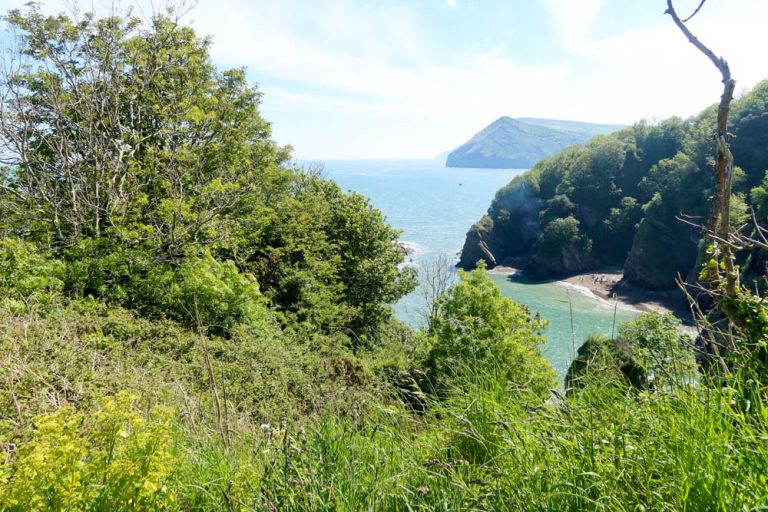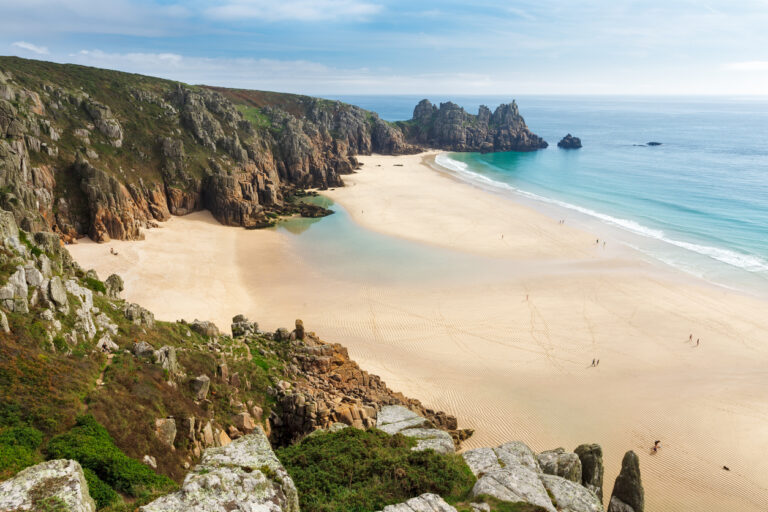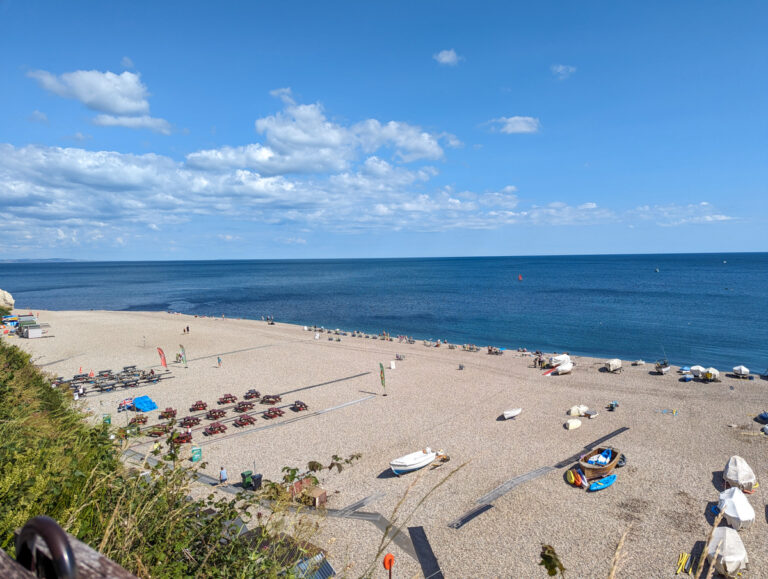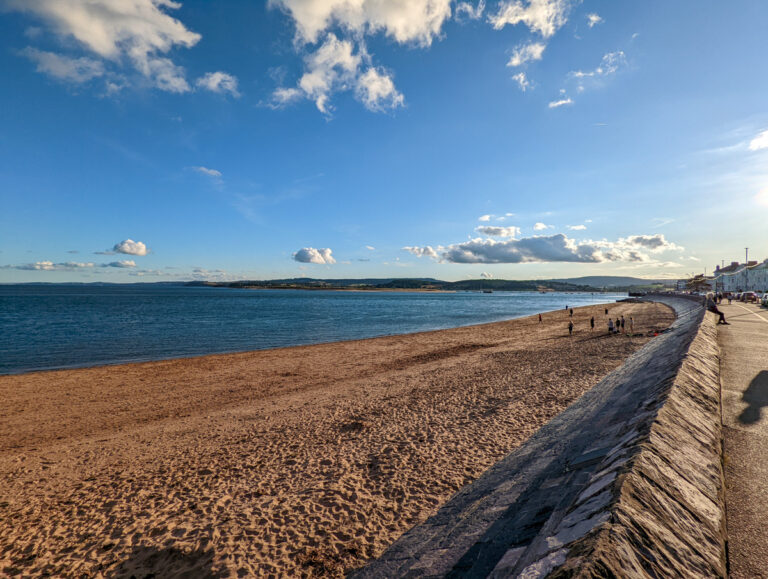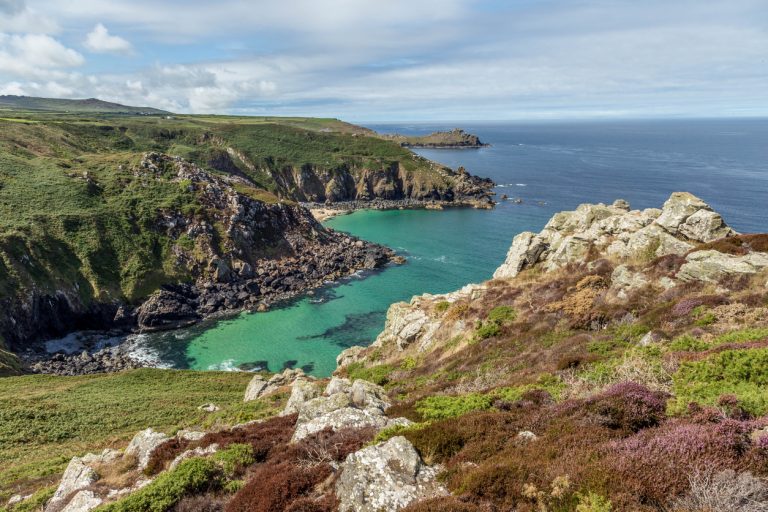Walking the South West Coast Path: the ultimate guide
Are you interested in walking the South West Coast Path? This guide will direct you around the entire coastline!
With seemingly sky-high cliffs, beautiful white-sand beaches and epic turquoise sea, the coastal scenery of the South West Coast Path is unmatched.
Spanning 630 miles from Minehead in Somerset to Poole in Dorset, the South West Coast Path is the longest national trail in the country.
It encompasses sandy beaches, dramatic clifftops with stunning views and plenty of lovely settlements and attractions en route.
But a voyage such as this can be difficult to organise. I’ve *nearly* completed the entire South West Coast Path, and I have quite a few tips to impart!
Whether you’re wondering how to walk it, what you’ll need for a successful expedition or where’s best to stay along the way, this blog post should have all the answers.
You can see all of the rest of my posts on the SWCP here.
How to walk the South West Coast Path
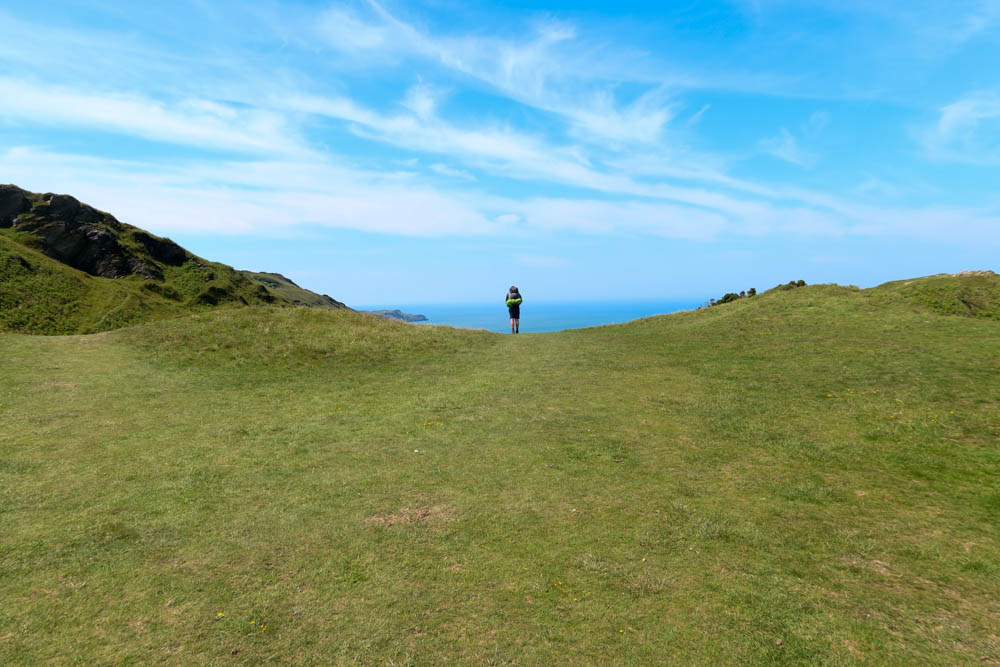
There are a few options to explore the coastal walking trail – both independently and as part of a guided or self-guided tour.
Independently
Many travellers walk the South West Coast Path independently.
All ‘independently’ really means is that you’re not going with a tour, but you can do it with a group of like-minded people or solo, carry all your own bags or use luggage drop-off services – it all depends on you!
Personally, I walked with my boyfriend (check out his article about it in Lonely Planet), and we used a luggage drop-off service on the most challenging parts.
We used luggagetransfers.co.uk for our bag transfers and always had a good experience.
With a tour
The second option is to book a tour.
These tours vary in style; some are guided, where you’ll be part of a group and be taken around the path, whereas others are self-guided, but the company will organise baggage transfer, accommodation and some meals.
There are a few self-guided South West Coast Path walking holidays that are bookable on Viator.
These include accommodation and a fully comprehensive tour pack with maps available in multiple languages.
Access to a smartphone digital app is also provided, allowing users to download routes for GPS tracking before the journey.
In case of any emergencies, participants have access to a 24/7 helpline for immediate assistance.
Additionally, breakfast is included in the package.
Luggage transfers between accommodation providers are also facilitated, ensuring a hassle-free travel experience for guests.
Check out the holidays by clicking on the links below:
- South West Coast Path Walking – Somerset & Devon (11 days, 10 nights)
- South West Coast Path Walking North Cornwall Coastline (13 days, 12 nights)
- South West Coast Path Walking South Cornwall Coastline (12 days, 11 nights)
Where to stay on the South West Coast Path
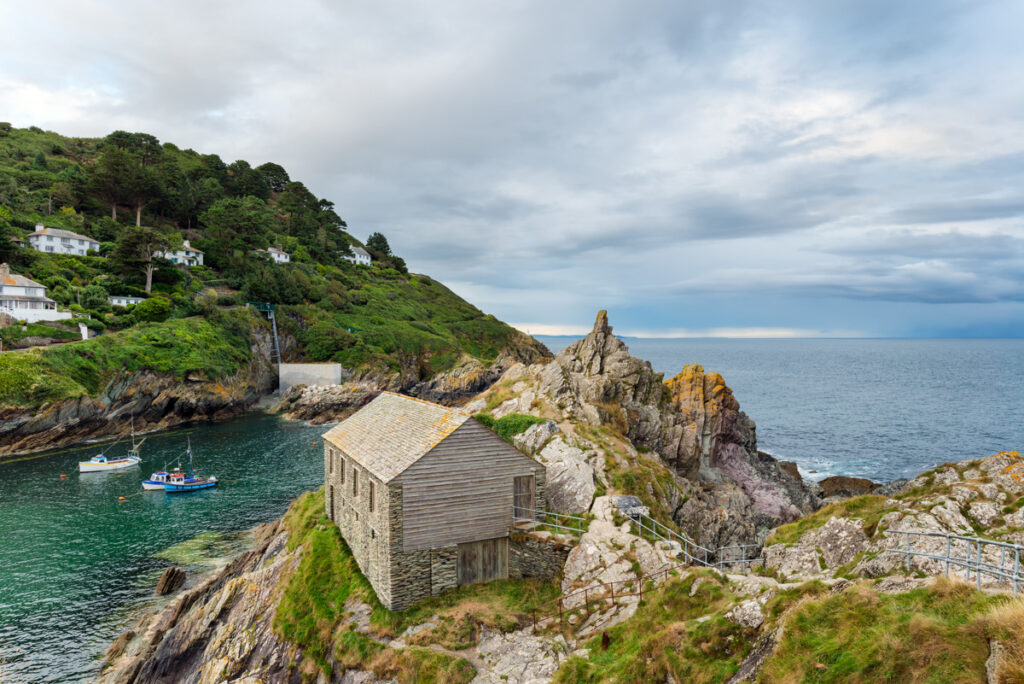
There are plenty of places to stay throughout Somerset, Cornwall, Devon and Dorset, many of which are right by the South West Coast Path (some are just a few steps away!). Here are some of the different types of accommodation you can expect:
Camping
There are plenty of campsites along the South West Coast Path, some of which are only a few steps away from the path itself.
We stayed in lovely campsites in Porlock, Mortehoe, Tintagel and Cadgwith; and there’s plenty more!
These campsites typically range in facilities; some have lovely hot showers, washing facilities and on-site cafes, whereas others are more rustic and basic, with just cold water showers and a sink for washing up!
Can you wild camp on the South West Coast Path?
You can’t legally camp on the South West Coast Path, and we didn’t while we were hiking.
However, lots of people do.
I’m not advising anybody to (as I said, we didn’t wild camp because we didn’t want to get into trouble!) – but if you do, please ensure that you leave no trace of being there and are respectful to the land.
B&Bs
Of course, there are plenty of B&Bs on the entire trail.
Some of these are very close to the path, whereas others require a little walk inland.
Some B&Bs will offer a pickup service for hikers, so this is always worth enquiring about!
B&Bs provide comfortable accommodation, usually with hot showers and a delicious cooked breakfast each morning – just what you need for a day of trail hiking.
Hotels
There are also lots of hotels along the coastal path.
We particularly liked the one that we stayed at in Ilfracombe – Grand Harbour Hotel, but there is plenty on offer for all budgets.
Airbnb/ VRBO rental
Lastly, you can rent Airbnbs or VRBOs along the path too!
Some aren’t feasible for just one night, as you often have to pay extra fees.
However, they could be a good option if you’re planning on taking some rest days in some of the beautiful Cornish coastal towns.
Best parts of the South West Coast Path
There are so many amazing parts of the South West Coast Path!
As someone who’s hiked most of the national trail, here are my favourite parts.
North Devon
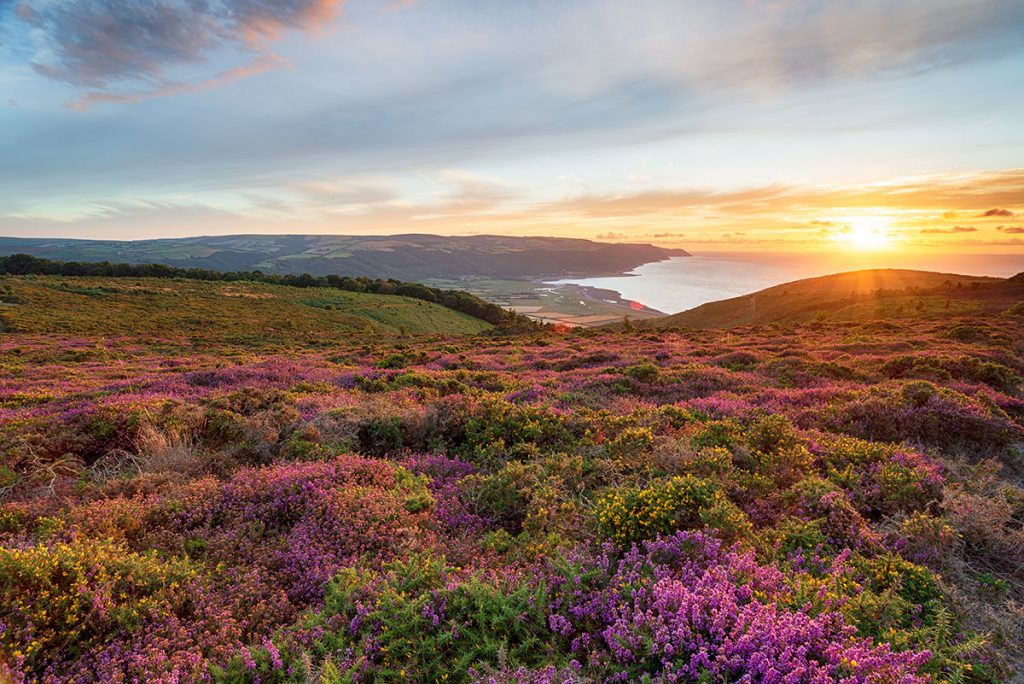
The soaring, rocky cliffs of Exmoor National Park are a feast for the senses.
The path weaves a rollercoaster route along the Somerset/ Devon coastline, soaring up to the top of some of the highest cliffs in the region and then descending down into charming rocky coves.
Listen to the sounds of birds as you hike through woodland areas, and look out for the gently lapping waves far on the beaches below.
However, I did find these sections to be particularly challenging – Somerset’s Minehead to Porlock walk wasn’t too difficult, but the Porlock to Lynmouth and Lynmouth to Combe Martin sections were tough!
The coast path becomes easier west of the national park, with some gentler cliffs and flat sections – but there are still a few challenging spots – this is the South West Coast Path after all!
On the western side of the North Devon coast, the Combe Martin to Ilfracombe/ Woolacombe section is also particularly stunning.
It traverses through the beautiful harbour of Ilfracombe, spanning secret coves and passing by illustrious beaches.
North Cornwall
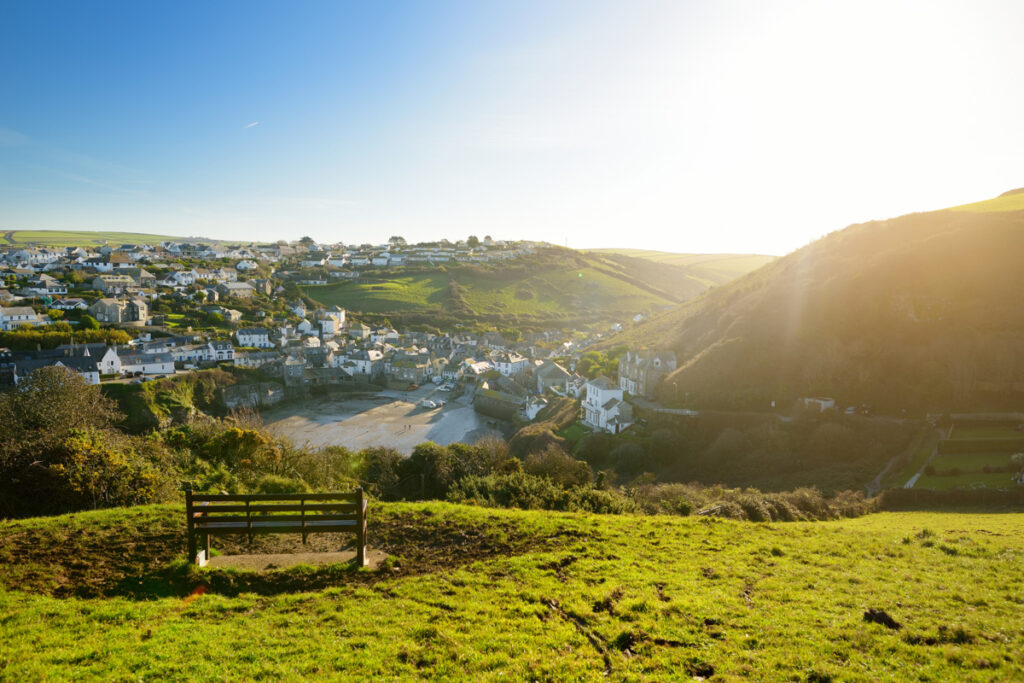
Once you cross the border, you’ll be on the gorgeous northern Cornish coast – one of the most spectacular coastlines in Europe!
Enjoy dramatic cliffs and brilliantly blue water as you hike along this pathway.
Here are a few of my favourite sections in North Cornwall coast path:
Hartland Quay to Bude is amongst the most difficult, but it is one of the most spectacular sections of the entire path.
Spanning out of the rocky Hartland Quay, the craggy path bypasses dramatic waterfalls and descends into combe after combe as it crosses the border from Devon to Corwnall.
I also loved the Bude to Boscastle and Boscastle to Port Isaac hikes, both of which run along the top of dramatic clifftops and boast some of the best dramatic views in the region.
Porthcothan to Newquay is also incredible, passing through Bedruthan Steps, Watergate Bay, Mawgan Porth and Newquay’s other beaches.
Portreath to Hayle is a wonderful hike, with views over St Ives Bay, through a glorious heritage coastline area and even past Mutton Cove Beach, one of the best places to see seals in Cornwall.
It ends by walking along the stunning Gwithian Beach.
Also impressive are the St Ives to Pendeen and Pendeen to Sennen hikes, with mining heritage areas, vistas to Cape Cornwall and Land’s End and hidden beaches.
South Cornwall
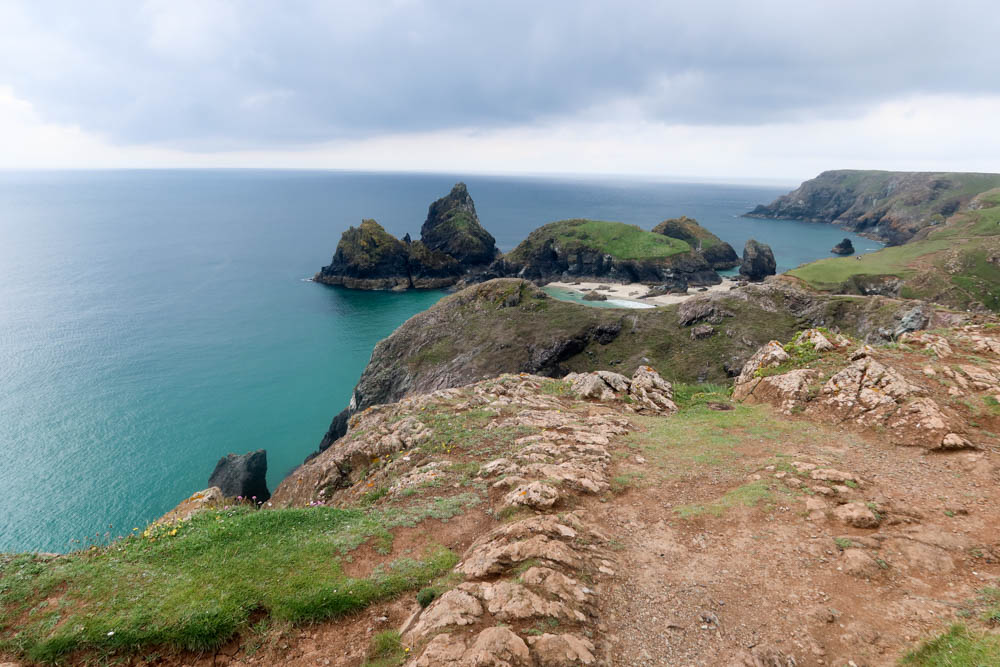
Once you’ve rounded Land’s End and reached South Cornwall, the coastline turns slightly less dramatic – but while there are fewer challenging sections, that doesn’t make the coast any less spectacular.
One of the best hikes is Land’s End to Porthcurno, which is isolated and jagged, home to hidden gems like the enchanting Nanjizal Beach (one of my favourite beaches in Cornwall).
Don’t miss hiking around the dramatic Lizard Peninsula, where you can see the stunning Kynance Cove and Lizard Point which is the furthest south point of mainland UK.
Another beautiful part of the south coast is the area around Fowey, which traverses through the beautiful Readymoney Cove and to Fowey itself.
Then, you can get the ferry over the river to Polruan and hike to Lantic Bay, another world-class Cornwall beach.
Finally, the Rame Peninsula is a wonderful part of the Cornish coast path, with a glorious coastline – Rame Head juts out into the blue waters – and quaint villages like Cawsand and Kingsand.
It also sees fewer tourists than other parts of Cornwall!
South Devon
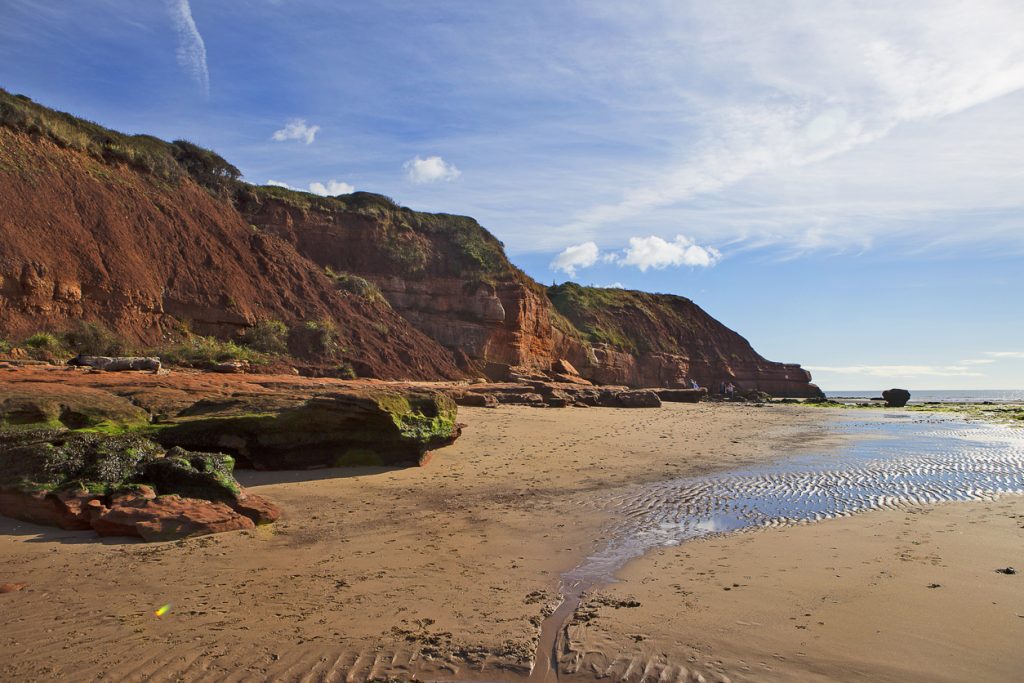
The South Hams region traverses through some of the most remote areas in Devon, including East Prawle, its southernmost point.
One of the best hikes in this area is Dartmouth to Blackpool, which leaves the estuary town and peters down towards the blue flag Blackpool Sands Beach.
The Devon Jurassic coast, which starts in Exmouth, is stunning.
This is the Triassic section of the coastline, with bright orange cliffs and the chance to go fossil hunting.
Try walking from Exmouth to Budleigh Salterton or a circular walk from Budleigh Salterton up the River Otter, to Ladram Bay and along the coast path back to Budleigh.
There’s also the short walk from Beer to Seaton – or you could start earlier on in Branscombe which is home to thatched cottages and a historic forge.
Dorset
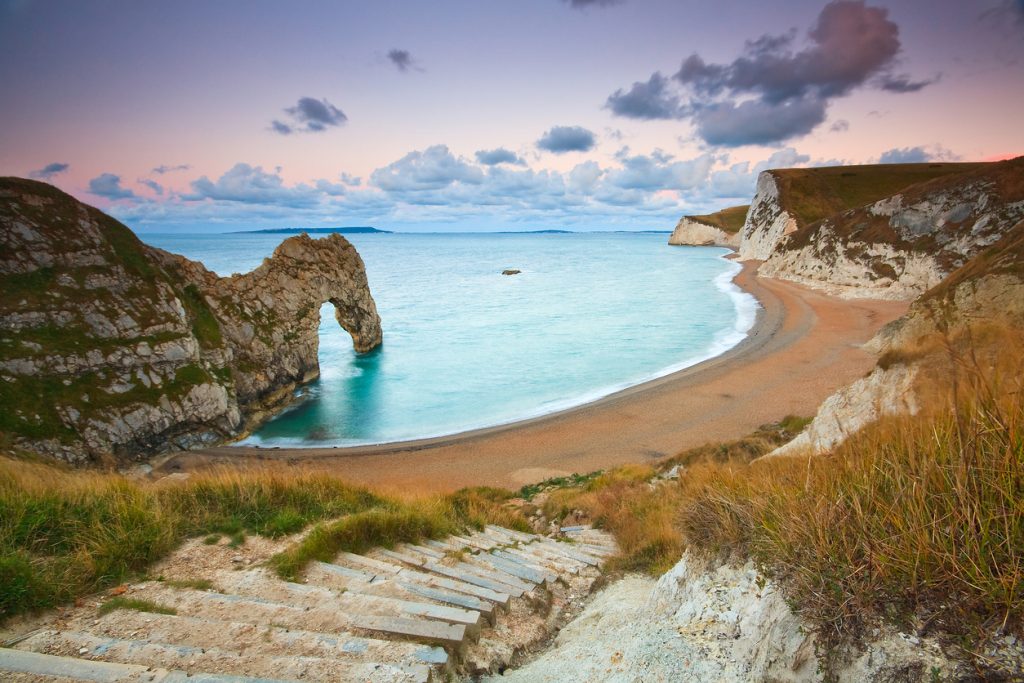
Dorset encompasses the Jurassic Coast, 95 miles of iconic scenery which traverses back to 250 million years in time.
The Isle of Portland circuit is a breathtaking journey along rugged cliffs, hidden coves, and rejuvenated quarries, with the South West Coast Path offering stellar views from its commanding limestone landscape.
Weymouth to Lulworth Cove leaves the gorgeous seaside town of Weymouth, takes in some of Dorset’s best cliffs and ends in the breathtaking Durdle Door, an arch which stands out from the sands into the sea and is among the most popular spots on the coastline.
Swanage to Studland leaves the beautiful seaside village and traverses to Old Harry Rocks, before terminating in Studland Bay. This will give you a real sense for how diverse the rocks along the Jurassic Coast are!
How hard is the South West Coast Path?
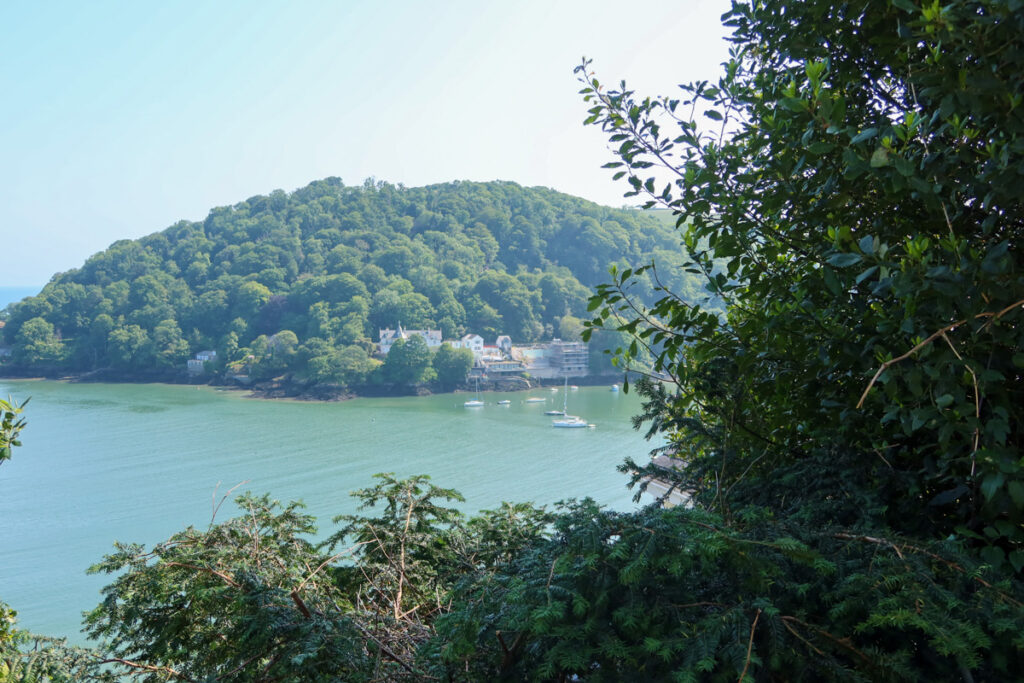
The SWCP is harder than you’ll think!
In fact, when climbing it, you’ll do the equivalent climb of summiting Mount Everest a whopping four times.
I found the 630-mile adventure to be one of the physically toughest things that I’ve ever done, but don’t let that put you off!
It was well worth every step.
Which direction should I walk the South West Coast Path?
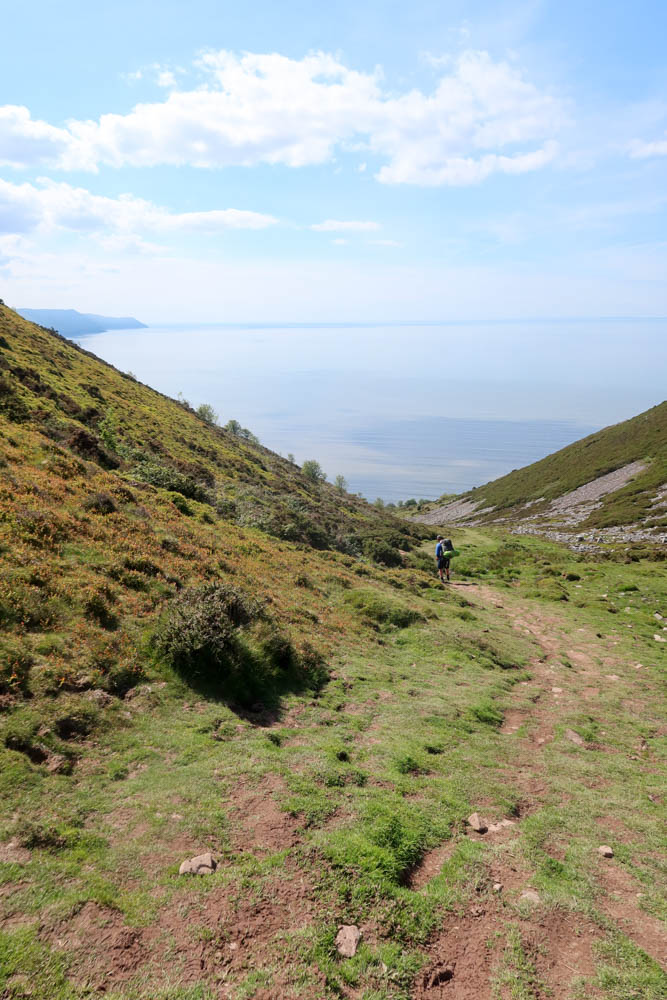
One of the biggest questions when planning a South West Coast Path trip is which direction to walk in?
You can hike the national trail in both directions, but most people start in Minehead and walk in an anticlockwise direction.
There’s nothing wrong with walking clockwise though – the only issue is that all the guidebooks will be backwards!
What to pack
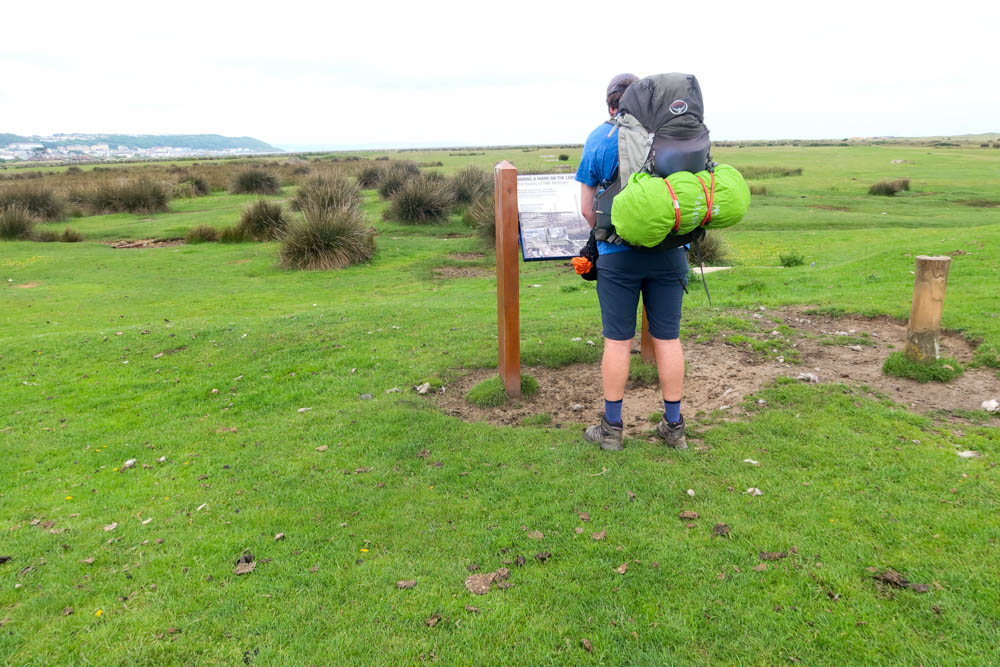
I’m going to write a full blog post all about what to pack for the South West Coast Path, but here is an overview:
- Water bottle: a water-to-go bottle filters water from rivers and other sources (not the sea!), making it easy to drink clean water en route. Click here to read more about them!
- I also love Chilly’s bottles – they’ll keep water cool while you’re hiking, but they can be heavy!
- Hiking wear: T-shirts, shorts and sports bras are all essential, along with a light fleece sweater. If you’re hiking in the cooler months, you might prefer to wear hiking trousers or gym leggings. Shop womenswear on Go Outdoors by clicking here or menswear by clicking here.
- Hiking backpack: I love Osprey backpacks which have plenty of straps to keep weight dispersed. This is my favourite one – it’s such great quality for hiking!
- Cooking equipment: Pack a portable gas stove and portable saucepans. This portable gas stove is really light and it’ll fit perfectly in your bag!
- Things to eat with: camping plates, bowls, knives and forks are essential. This set is great value.
- Sleeping bag: Remember to have the right one for the season! Berghaus are great value – check out this one.
- Tent: I use excellent-quality MSR tents. We used this high-quality – and importantly light – tent while hiking and camping the coast path!
How much does it cost to walk the South West Coast Path?
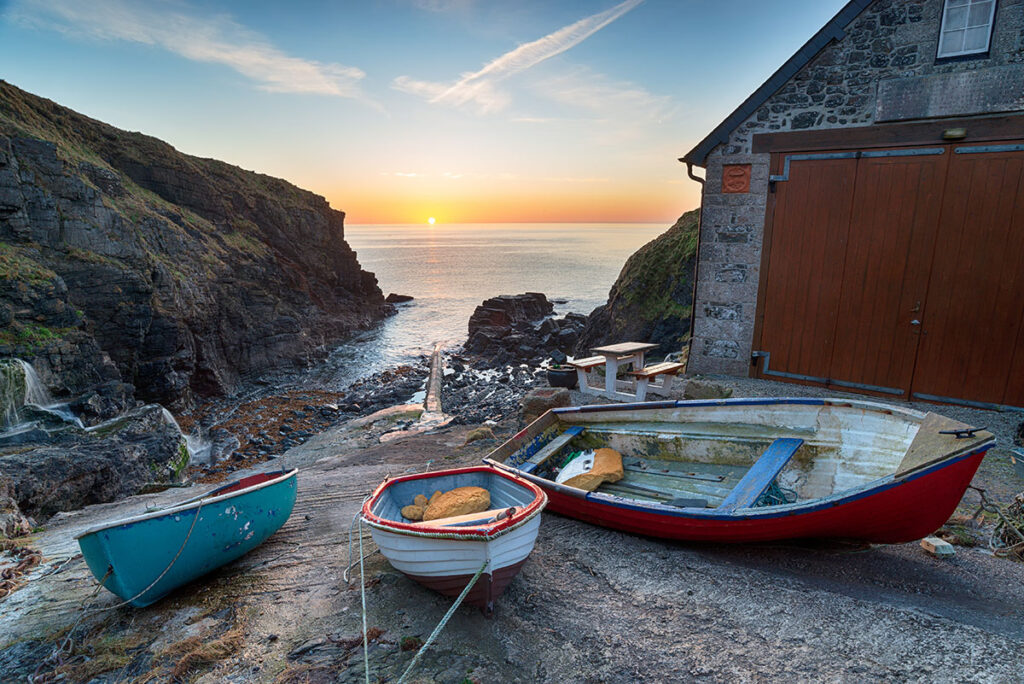
It doesn’t need to cost the earth to walk the South West Coast Path!
Campsites cost around £20 per night for two people (sometimes cheaper), so hiking a month would cost £300 per person in accommodation.
Cheaper than renting an apartment!
The path is all free, and if you’re walking a longer section, you won’t spend much on transport costs – just the occasional train or bus to get to and from different sections.
Food-wise, you can spend as much as your budget allows.
You’ll end up spending more than usual on a weekly shop because you’ll be doing more frequent shops as you can’t carry as much.
Plus, you’ll need to purchase more cupboard food rather than fresh produce.
We ate a lot of baked beans, canned ravioli and pesto pasta!
Of course, you can eat out as well – but the costs will quickly add up if you do so!
So generally, the South West Coast Path is probably the cheapest way to see Dorset, Devon and Cornwall if you take steps to keep it budget-friendly.
How long does it take to walk the South West Coast Path?
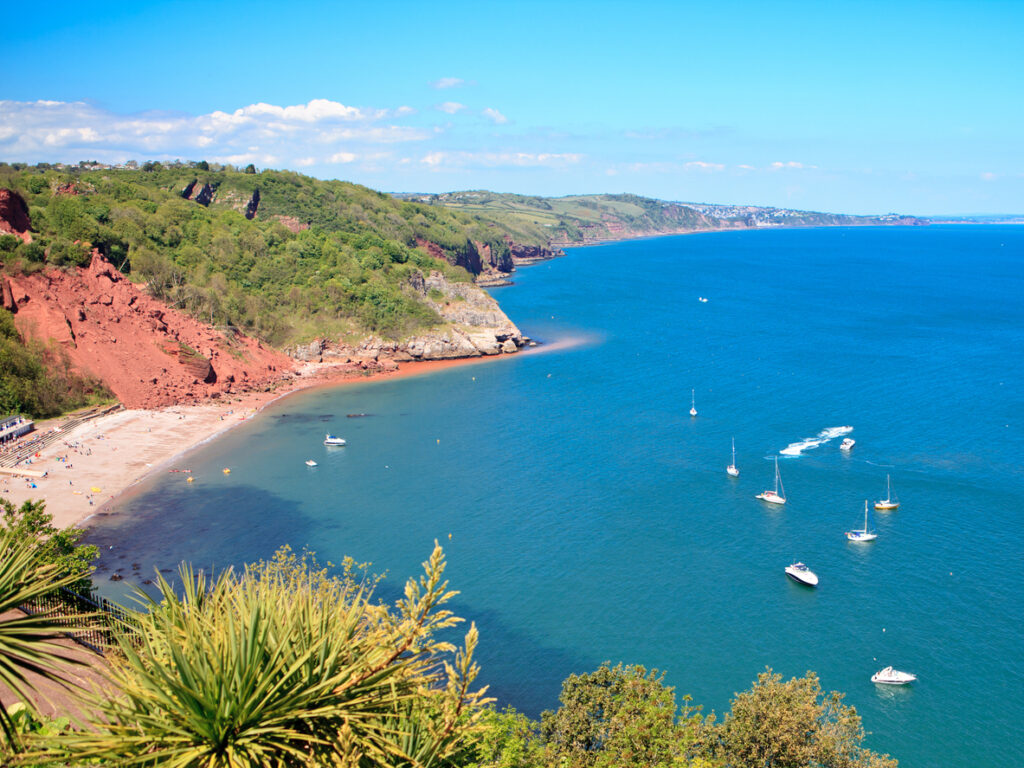
How long is a piece of string? It can vary for literally everybody.
It took my partner and me around two months to walk half of the entire route – but we took it at a very leisurely pace, enjoying the many picturesque fishing villages and stopping at some of Cornwall’s best attractions en route.
It takes most people around eight weeks to hike the entire 630 miles, but some people have done it much quicker – in 2016, Damian Hurst completed the entire path in 10 days.
I’d recommend considering how much time you have and your priorities – do you want to complete the whole thing, or would you rather see a section, visit some tourist attractions and enjoy a more relaxed holiday?
Everyone’s coast path journey is different, but on average people who do the full trail in one (most do it in sections) complete it in about 6-10 weeks.
What is the best section of the South West Coastal Path?
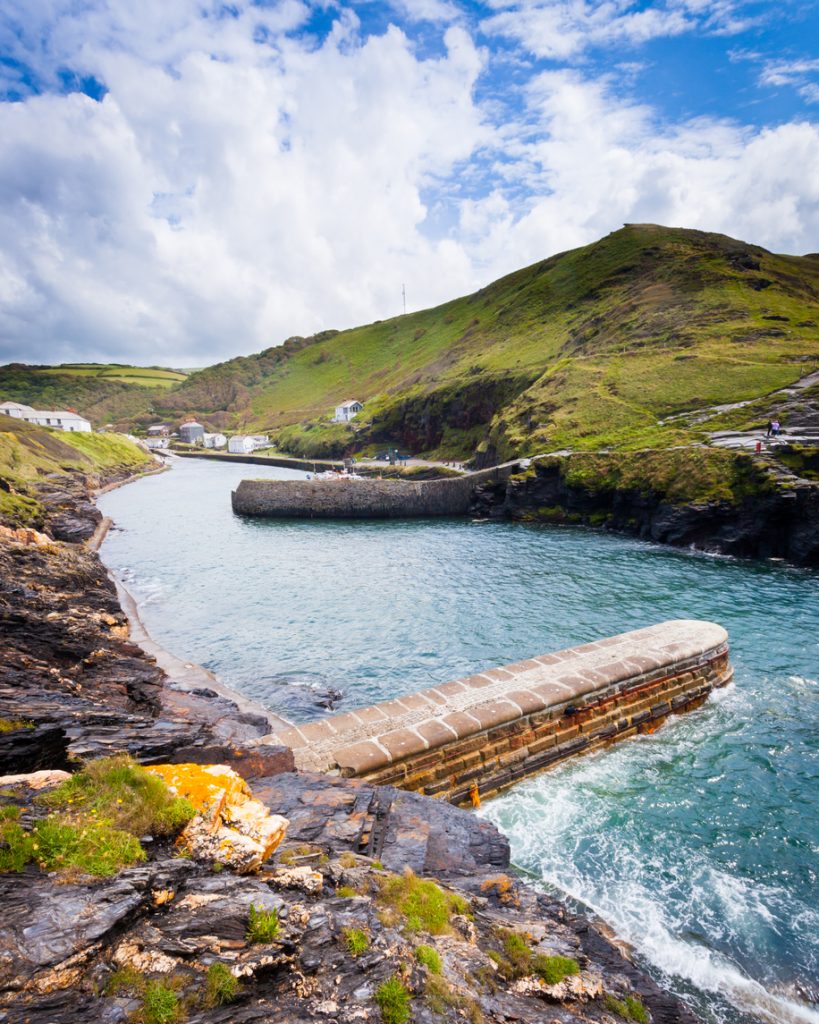
It’s hard to designate just one as the very best section, but I’d have to say the North Cornwall area.
The Hartland Quay to Polzeath section spans through the rocky Hartland Quay coastline and its many waterfalls, Bude’s best beaches, fairytale Boscastle, rocky Tintagel Castle, charming Port Isaac and the beautiful surf beach of Polzeath, which leads down into the Camel Estuary.
When should I walk the South West Coast Path?

The South West Coast Path can be hiked any time of year – I’ve headed out on it in all seasons!
I’d recommend avoiding it in the hot summer season – the coast ascends and descends up and down the cliffs, which can be quite a sweaty affair when it’s 25C+ outside!
However, the South West doesn’t usually have quite as intense heatwaves as elsewhere in the country, and there’s often a cool sea breeze.
In the winter, the days get dark at around 3:30 – 4:00 pm – so I’d also recommend against hiking long sections during this season!
Of course, if the weather’s particularly rainy or stormy – which is more common in winter – you might want to avoid hiking during this season.
However, I had a lovely hike from Looe to Polperro on a brisk winter’s day last year!
If you want a combination of mild hiking temperatures and fairly long days, spring and autumn are probably the best months!
What is the hardest section of the South West Coast Path?
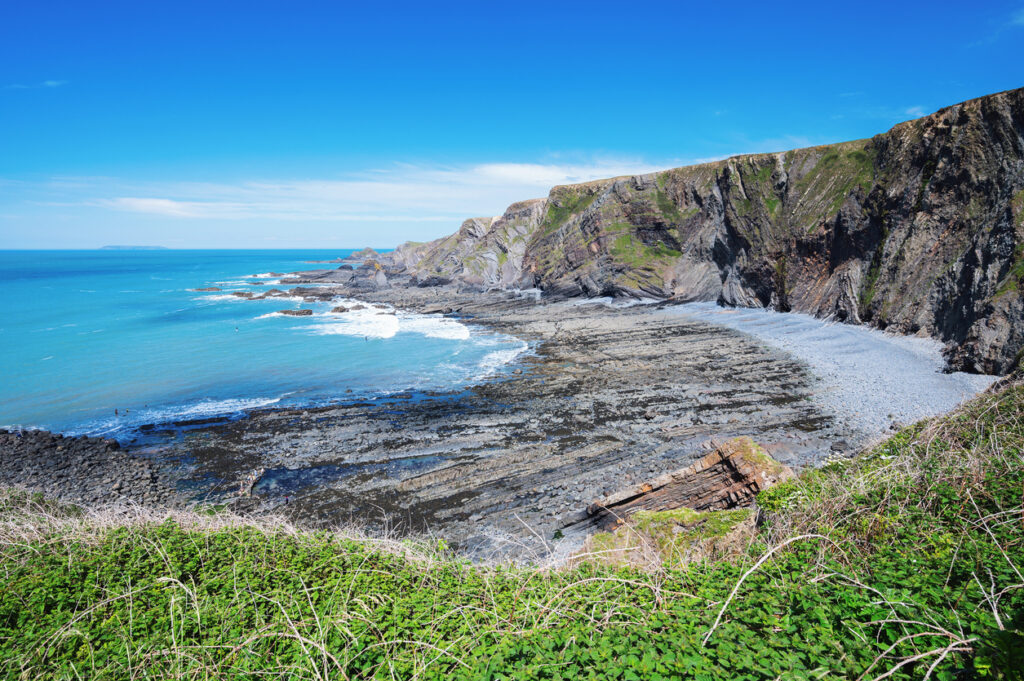
Now, if you’re looking for the most beautiful section of the SW Coast Path, there is something to acknowledge…
And that’s the direct correlation between difficulty and beauty!
This means that the best section of the South West Coast Path – Hartland Quay to Polzeath – is, in my opinion, also the most difficult.
That doesn’t mean that the other sections aren’t beautiful, but there’s something especially dramatically alluring to this section in North East Cornwall.
The area from St Ives to Land’s End is also one of the most challenging parts of the coastal path – and again, it boasts some of the most beautiful coastline on the path!
What is the easiest section of the South West Coast Path?

The easiest section of the SW Coast Path is possibly the South Devon section leading from Plymouth to Exmouth, which encompasses flat paths around towns and gentle cliff paths.
Alternatively, the section from Padstow through to Newquay, Perranporth and to Portreath is also comparatively easy.
Is the South West Coast Path easy to follow?
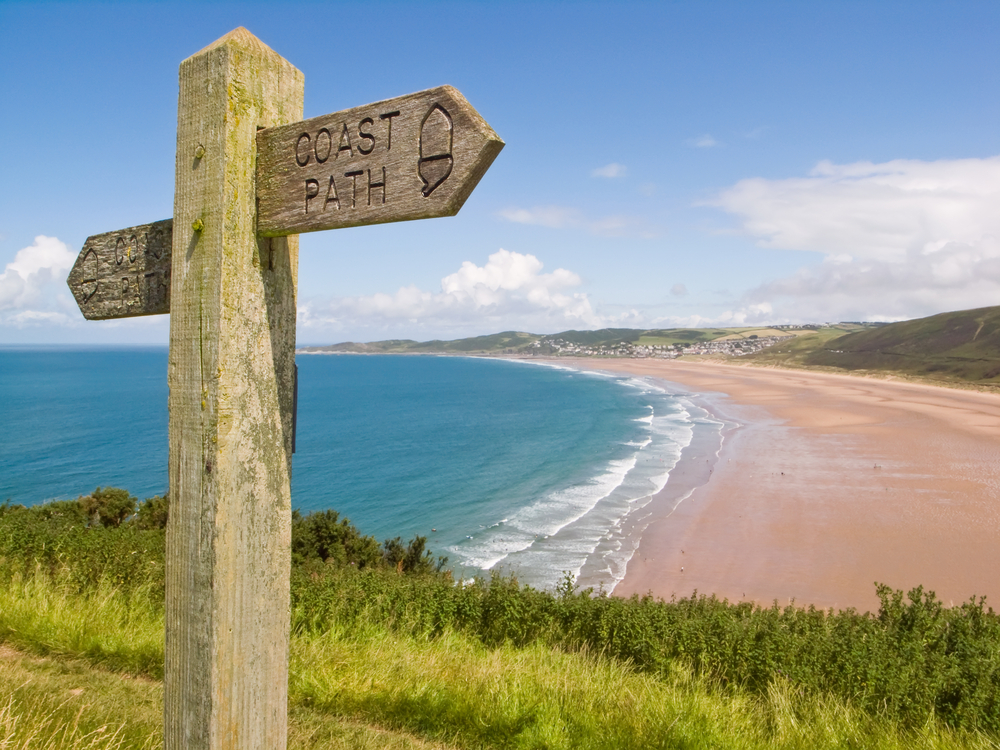
Yes, the spectacular scenery of the SWCP is incredibly easy to follow!
Signs mark the whole trail – if you’re ever lost, just follow little acorns etched into posts along the path.
I’d recommend using an OS map – either a hard copy map or a mobile app.
You could also use the free app Maps.Me which has lots of trials marked – more than Google Maps.
Are you ready to hike the South West Coast Path?
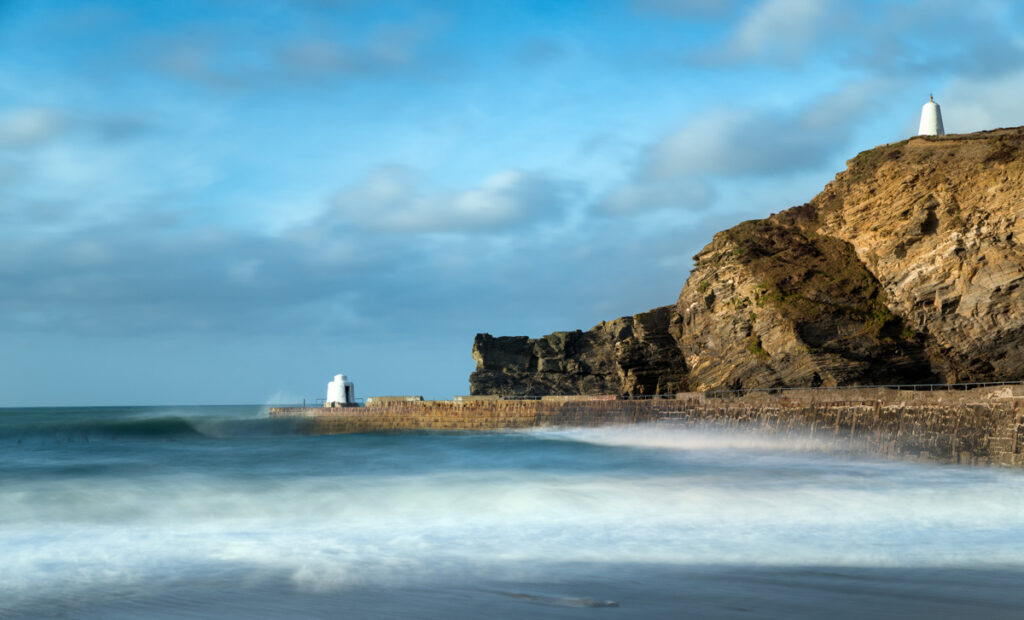
Whether you’re traversing the stunning coastline of the Atlantic Coast, plummeting into one picturesque village after another or exploring some of the rivers that feed into the seas around South West England, the South West Coast Path hiking trail is a unique experience.
Whether your hiking adventure includes all 630 miles or just a day hike, you’ll get a sense of the magnificent route – and when you’re absorbing fantastic views from each cliff top, you’ll already be planning your next stint on the coastal path!


